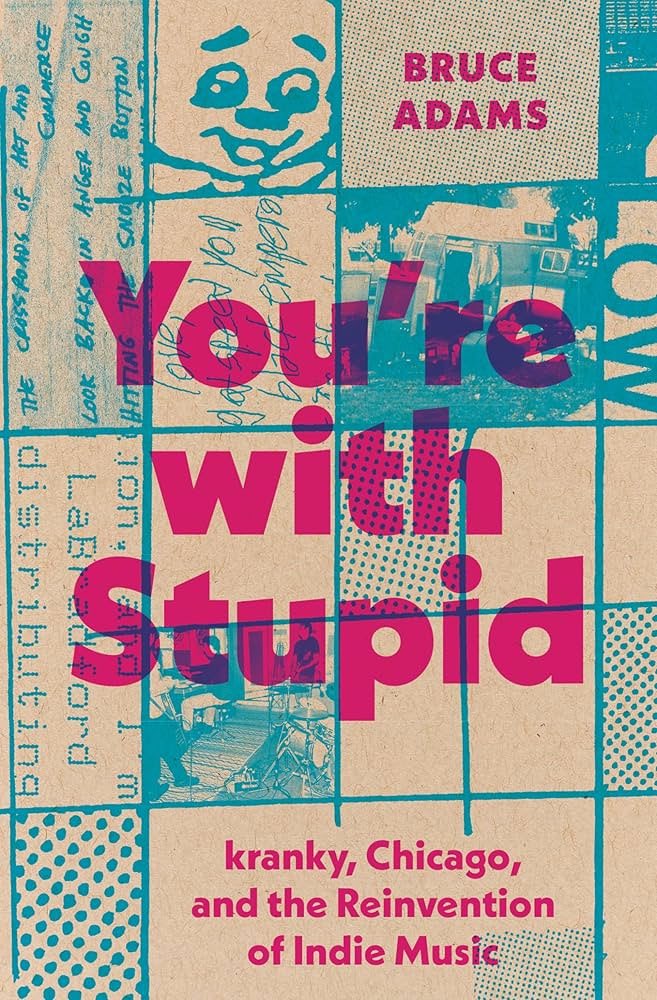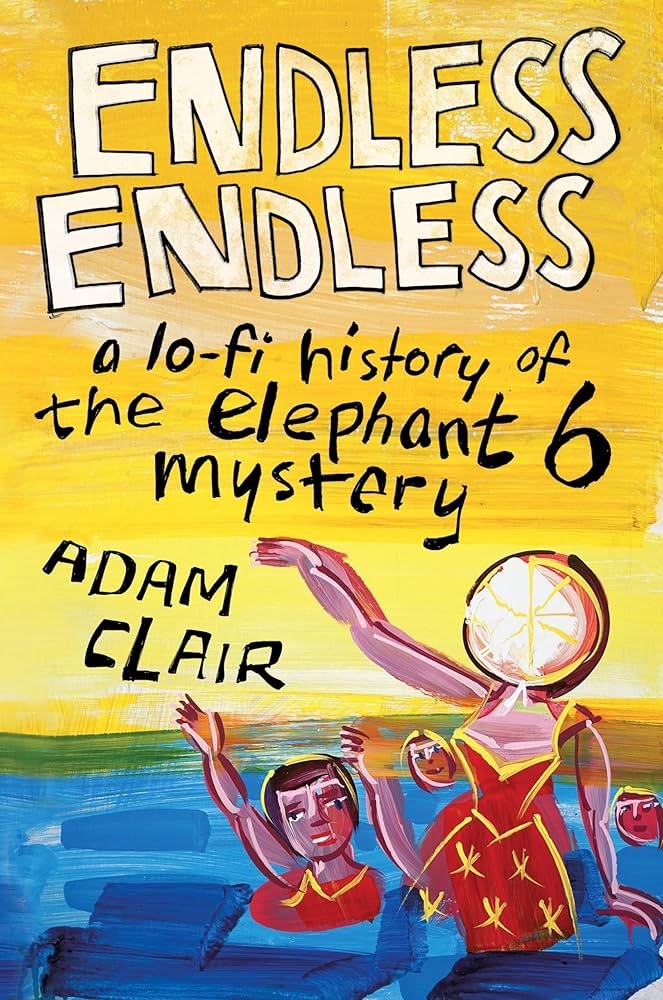Free Energy is the rare sophomore album that sees its creators moving level-headedly in so many separate directions at once in such straight paths that none of it ever feels overwhelming, let alone too far removed from their debut. On the new LP, the neo-psych of Dummy’s 2021 introductory release Mandatory Enjoyment leans into revivalisms of space-rock, noise-pop, baggy, krautrock, and Seefeel-esque ambient-pop all at once, while cohering around a singular creative vision that’s rare to find in the post-internet era.
As guitarist Joe Trainor shares, this scope was partly informed through devouring books on Kranky, Flying Nun, and Elephant 6—three of the most free-spirited indie labels of the ’80s and ’90s who basically created their own genres that continue to be mined by artists today. Yet beyond that, the band pulled inspiration from much deeper and often more abstract sources outside the realm of music, including the fantastical (yet not all that unfamiliar) landscapes of Elden Ring, the tactile creation of stained glass, and even the science behind bubbles—an unlikely theme found across the album, from its cover created by vocalist/organist Emma Maatman to a recreation of the sound of bubbles popping on mid-album cut “Nullspace.”
With Free Energy out now via Trouble in Mind, read all four band members’ in-depth commentary on five non-musical influences on the project. And if you haven’t already, you can stream/purchase the record here.
ALEX EWELL
Elden Ring
Elden Ring was a huge source of inspiration for me while working on our album. I’m a lifelong gamer, but from the Soulsborne canon I’d only played Sekiro before jumping into Elden Ring. It took me over a year to fully explore the entire game, and in the process I became obsessed with the world and its lore. I started to see parallels between the Lands Between and our own world: Mysterious systems laid in place long ago, losing all semblance of purpose, leading all life toward ruin. I watched YouTube essayists break down the architectural references FromSoft included in the game. This is more than a game. This is an examination of the human spirit through the lens of history. The difficulty aspect, I learned to appreciate. The game forces you to engage with its deep systems, to try new tactics and, ultimately, to learn.
NATHAN O’DELL
Stained glass–making
Late last year I was given the birthday gift of a course on creating stained glass pieces. Over five classes I learned how to create a piece from start to finish with the focus on taking each step carefully to create a great end product. It’s been a long time since I created any type of tactile visual art, so the idea of learning this craft was very exciting. It really helped me when I was in a kind of fog of creation to open up and seek more inspiration from outlets that I rarely pay attention to. I ended up drawing parallels to creating a song from the piece creation. Creating a design you’d like to make was the initial idea for the melody or riff, selecting colors and textures of glass became instrument composition, or polishing/adding patina to the solder joints were the finishing touches while mixing in the studio. The craft helped to push myself further into an artisan spirited outlook that helped to clear the fogginess I was going through.



JOE TRAINOR
Books about Kranky, Flying Nun, and Elephant 6
The biggest non-musical influence on Free Energy for me was reading a bunch of books on labels and the scenes surrounding them. The first one that really knocked me over was You’re with Stupid: Kranky, Chicago, and the Reinvention of Indie Music by Bruce Adams. It chronicles the earlier era of Kanky and the wider indie-rock scene at the time, especially in Chicago. The book really instilled a sense of not giving a single fuck about what anyone thought outside the four of us making the record. I also discovered bands like Dadamah, Spiny Anteaters, and Dissolve, who were large musical influences. This line in particular really resonated with me “Indie rock’ could be used in 1992 to describe a band or dismiss it, or to do both at the same time. As a pejorative, it worked really well: ‘indie rock’ meant watered-down and weak if you liked loud rock music, and it meant boring and predictable if you were inclined toward more open-ended musical structures or approaches.”
I also read two books based around Flying Nun: In Love with This Times and Needles and Plastic: Flying Nun Records, 1981–1988. As with the Kranky book, these two don't just cover the label/bands but also all the context surrounding the people involved, what was exciting them. The final book was Endless Endless: A Lo-Fi History of the Elephant 6 Mystery by Adam Clair, which similarly covers all the stuff mentioned before: just the artistic freedom and little world they built to create such lasting, timeless art. These books just really enriched my soul, and lit a fire under my ass to dig in more, continue to be restless, and try to create something that feels like our own. Learning about the history of independent music is important to me to understand where we are and where things came from.
As for Shadow of the Erdtree—I’m still processing it, but suffice to say I’ll probably be playing for a few hundred more hours before all’s said and done.
EMMA MAATMAN
Bubble science
It came pretty late in the game, but as the person who does nearly all of our artwork and graphic design, the idea of “bubble-science” (real) became incredibly inspirational to me. “Nullspace” was the last song written for the album, which is full of popping-bubble synth sounds. The artwork came after that—and I think it was Alex who first sent a still image of a bubble mid-pop to our group chat. I found it so striking, and instantly knew I wanted to create some version of that for the album cover. It also just made me want to learn more about the physics of soap films and bubbles.
I’ve always liked to source inspiration material from things that exist off-internet. It feels more personal and tactile that way. I found an old out-of-print science book about soap films which contained some really beautiful color plates and diagrams (some of which made it into the artwork in one way or another), and I read quite a large portion of it. Some of it was pretty dense, and I’m no bubble-scientist, bubble-ologist, or bubble-priestess, but I did find portions of it almost spiritual. But science can be a kind of religion, in my opinion. I feel oneness with the universe when I learn about the inner-workings, especially at a cellular or atomic level—far more than I ever have felt from any organized religion.
Soap films are so odd and almost magical, but at the same time deeply mathematical in their physics and how they interact with light and space. The term “free energy” came from The Bubble Book (as I call it now, my Bubble Bible) and after some back and forth with the band about the album title (even I wanted to call it “Mid Pop” for a time) we all came to realize what a powerful and enigmatic phrase Free Energy is. Its scientific meaning is pretty innocuous (in the book it’s described as energy available to alter the shape of a soap film at rest at a given temperature), but it also describes how we all felt about the process of writing this album. We all let go of some predispositions on this one, for sure. We hope the listener can find their own meanings there as well.
Dummy
Is it wrong to say “ourselves”? We leaned in a much more personal direction in terms of lyrical content and performance for Free Energy. Personal experience isn’t viewed as the most “unique” source of inspiration, but for Dummy, it’s kind of a new thing. I remember specifically saying aloud at practice while we were working on “Blue Dada,” “I think this one is gonna be a capital-L love song!” and seeing looks of semi-bewilderment around the room. That’s not to say there was “nothing personal” in the lyrics of previous releases, but a sense of detachment was always strongly implied, and definitely encouraged by all of us—especially in the delivery. This time around we let so much more emotion come through. I sang in my full voice, from low to high, loud and soft, meek and not-so-much. I wrote about my own personal experiences (a lot about past and current relationships)—again, common fodder for most. Of course, it’s mostly still drenched in metaphor. Some could say “sweaty, it’s still giving ‘detached’” but hey, I think we’ve made great strides.







